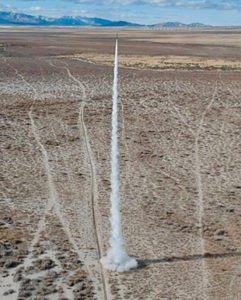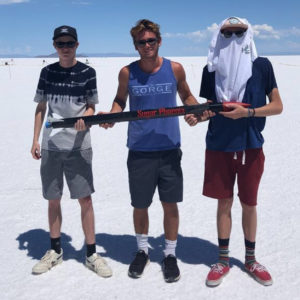 Last year Patrick McNally and Zach Rohovit launched their first high powered rocket. They built every component from scratch, including the solid rocket motor. It flew just over 14,000 feet (relative to sea level). This year they are both first year students in the Mechanical Engineering department here at the University of Utah. In addition to starting their undergraduate engineering studies, they have launched a non-profit called Uinta Suborbital Solutions with a goal of inspiring a new generation of University of Utah students to engage with the global scientific community of atmospheric and suborbital scientific research.
Last year Patrick McNally and Zach Rohovit launched their first high powered rocket. They built every component from scratch, including the solid rocket motor. It flew just over 14,000 feet (relative to sea level). This year they are both first year students in the Mechanical Engineering department here at the University of Utah. In addition to starting their undergraduate engineering studies, they have launched a non-profit called Uinta Suborbital Solutions with a goal of inspiring a new generation of University of Utah students to engage with the global scientific community of atmospheric and suborbital scientific research.

With their first year of college just around the corner, McNally and Rohovit spent last summer investigating undergraduate rocketry programs around the country. After learning about the goals and successes of other programs, McNally and Rohovit, joined by fellow bio medical engineering student Aksel Anderson, found their own vision for the future of collegiate level rocketry: providing a platform for researchers. Their goal is to provide a reusable launch vehicle capable of carrying up to 50 lbs (~23kg) of scientific equipment to an altitude of approximately 125 (~200km) miles.
McNally and Rohovit both began their undergraduate studies in mechanical engineering to continue pursuing their interests educationally as they work on their non-profit. They see a wide range of opportunity with the department, including passionate engineers and connections to faculty.
“The reason we think rockets are so fascinating is because they encompass so many different kinds of engineering,” said Rohovit. “As mechanical engineers, we can pursue a wide range of studies, which will allow us to make informed decisions as we work to solve problems.”
Additionally, the team is working with the Lassonde Institute to learn about funding opportunities and how to comply with state and federal tax laws. In the coming months, they hope to bring new engineering onto the team focusing on subsystems like avionics, payload integration, recovery systems, and more.
For more information, you can reach out to McNally and Rohovit by email.